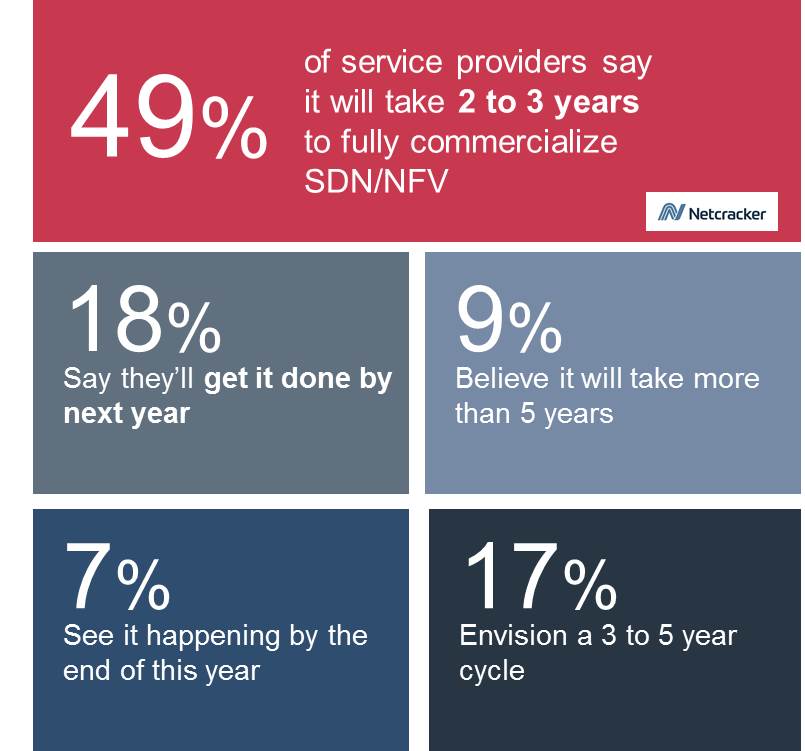Is 2 to 3 Years Too Long to Commercialize Virtualization?
Although service providers agree 2017 will be busy for virtualization, nearly half believe full commercialization is still 2 to 3 years away.
Nearly half of all service providers surveyed by European Communications on behalf of Netcracker believe that it will require 2 to 3 years to commercialize virtualized services fully. The natural follow up question is whether this is too long of a cycle given the accelerating pace of service innovation to which the communications industry is now exposed.
The gap between hype and reality is closing ever faster across a number of areas in this industry. From artificial intelligence and virtual reality to many elements of the Internet of Things (IoT), the industry finds itself reassessing exactly what full commercialization means and how long it can take before being just too long. The trouble within this hype-to-reality cycle is that it can be difficult to determine how fully a new service must be developed in order to live up to its associated hype.
Industry observers often state that AI is vastly overhyped; there is debate over whether what is marketed as AI actually is AI or is simply basic analytics labelled as AI. Similarly, some argue that 5G remains years away, never mind that 5G is a necessity if virtual reality and augmented reality are to live up to their respective hype.
Virtualization is one of the first steps on the path to these heavily hyped future service offerings, but virtualization itself has emerged from its hype cycle. Undoubtedly, the communications industry has acknowledged that it must transform to software-based infrastructure. The challenge for SDN and NFV now is not only living up to its hype, but doing so as soon as possible.
Although the service providers surveyed largely agree that 2017 will be a busy year for virtualization’s emergence, the fact that nearly half believe that full commercialization is still 2 to 3 years away may signal related challenges for service providers. Virtualization is the foundation for what comes next. Service providers must become software-focused, not only operationally but also culturally – they must think and act like mature, agile software innovators. Transforming to a virtualized environment is crucial. Without the flexibility, superior customer experience and greatly reduced time to market virtualization can bring, gaining competitive advantage in areas like IoT devices and applications, virtual reality and artificial intelligence may become far more difficult to achieve.

There are previous examples where service providers have missed opportunities as a result of a commercialization lifecycles requiring more time than could be afforded. The most obvious example is messaging, where OTT apps rapidly emerged as a substantial threat. Service providers are beginning to move rich communications services into the market, but Juniper Research estimates revenue lost to messaging this year alone will hit $104 billion, or more than 12 percent of service revenues.
The key takeaway from this object lesson is that virtualization presents a unique opportunity right now. Service providers who follow agile methodologies in their operations and the way in which they bring services to market can beat a 2 to 3 year commercialization cycle; in fact 25 percent of those surveyed believe they’ll achieve full SDN/NFV commercialization in a year or less. For the rest, it is either time to accelerate efforts or time to re-evaluate what “full commercialization” means. After all, many service providers have already brought virtualized SD-WAN, Gi-LAN, security, SaaS applications and other virtualized services to market. It stands to reason that full commercialization means “we’re making money with it now” even if a full transformation and maturation effort remains underway.